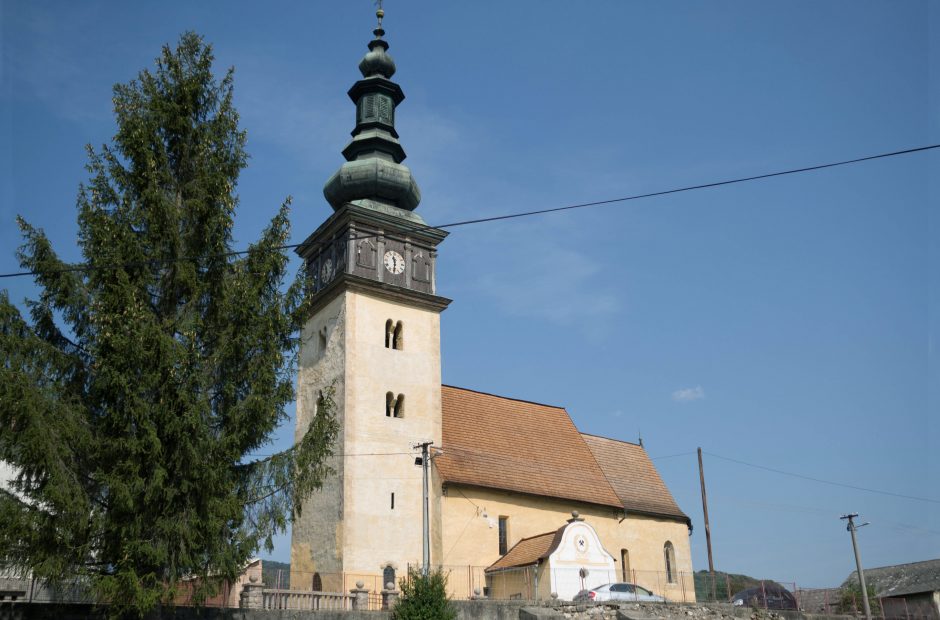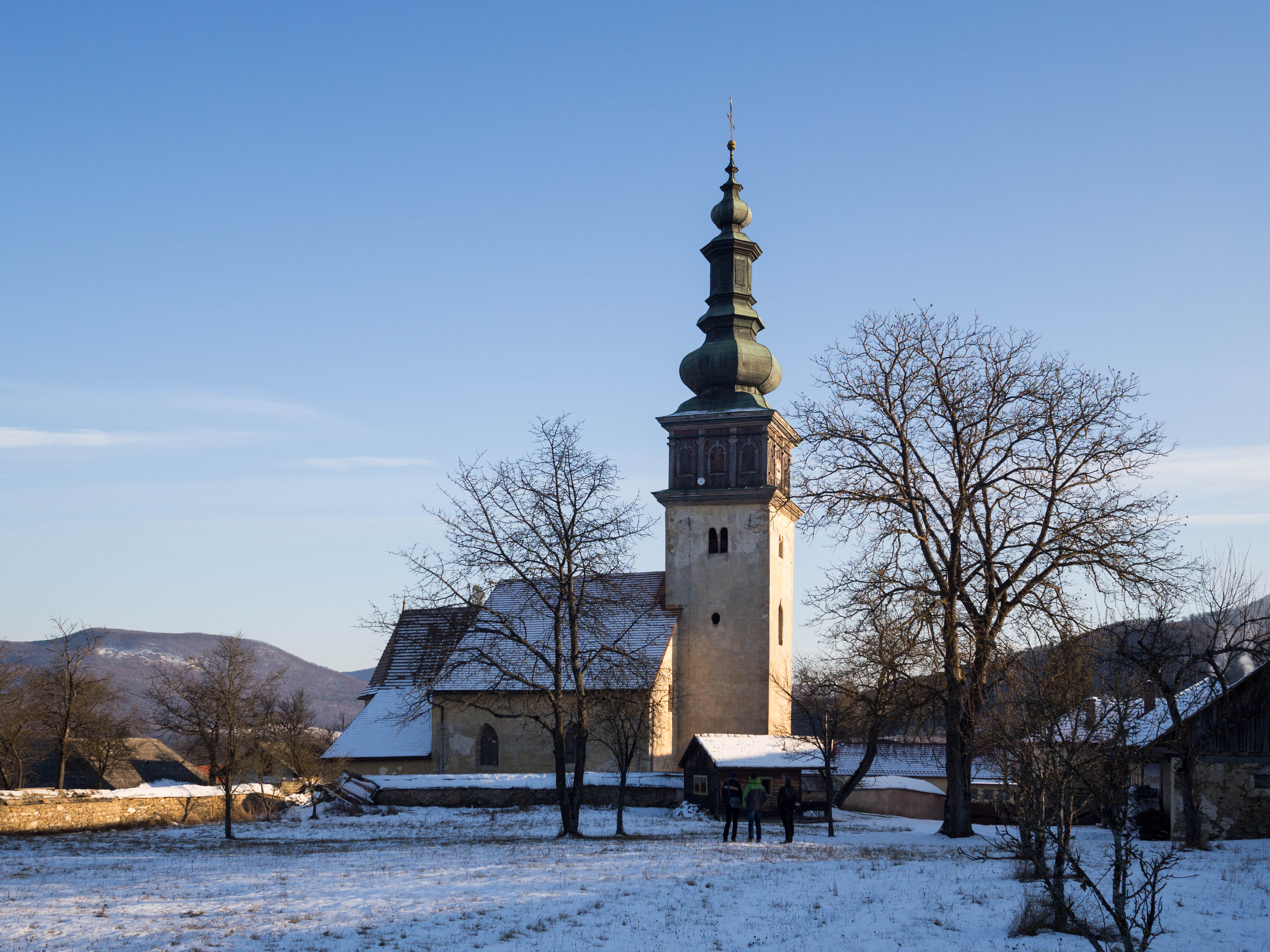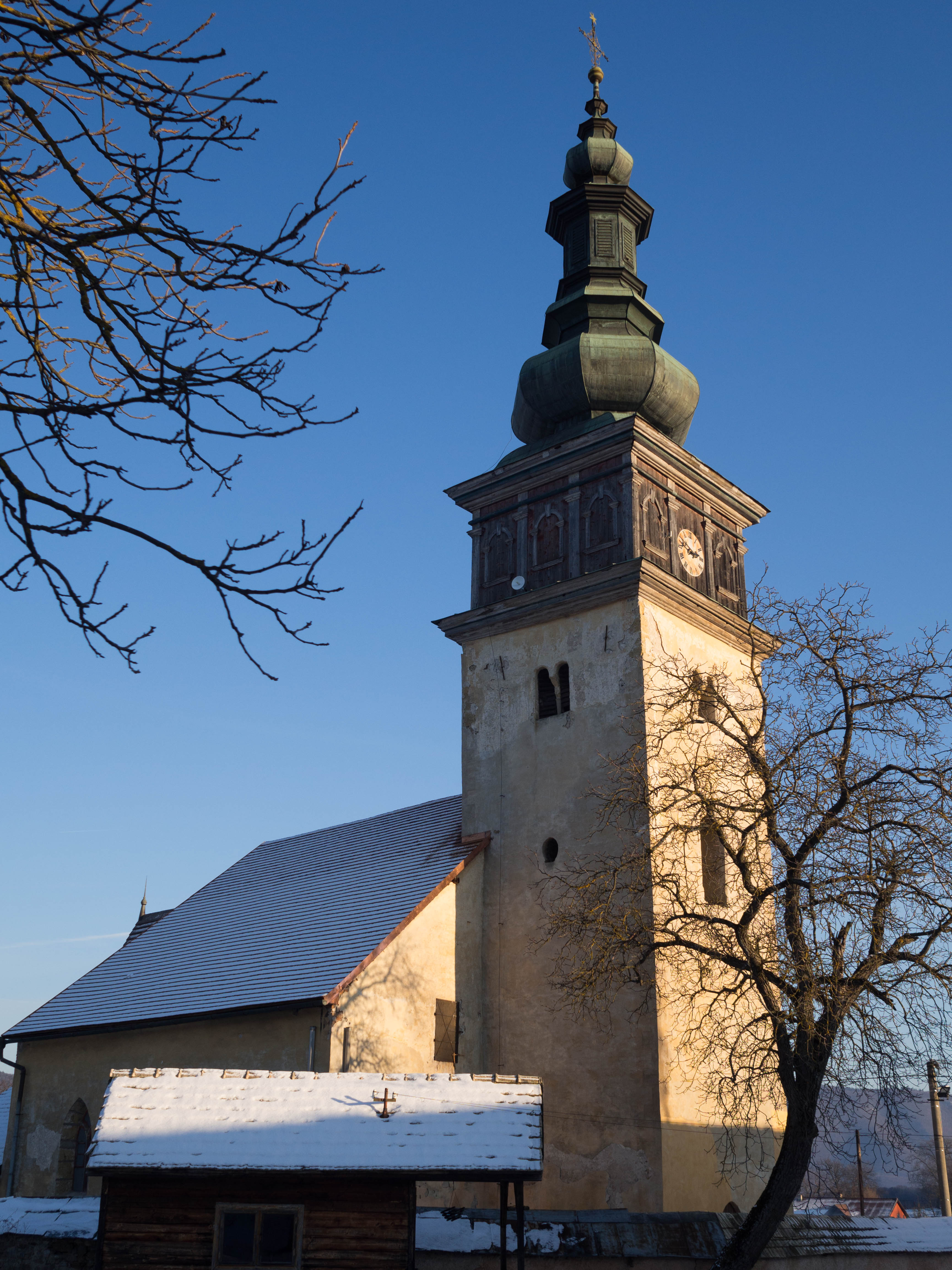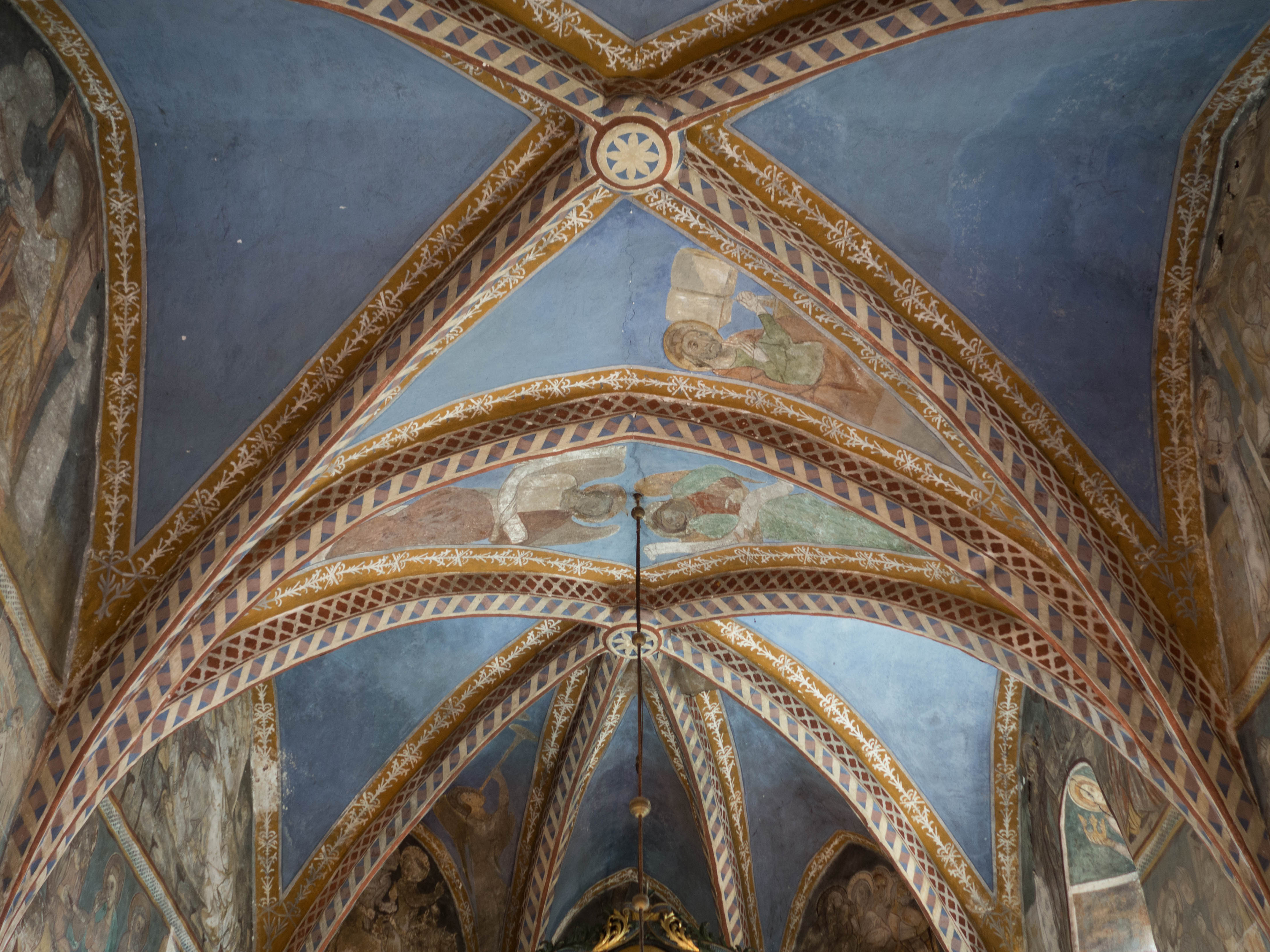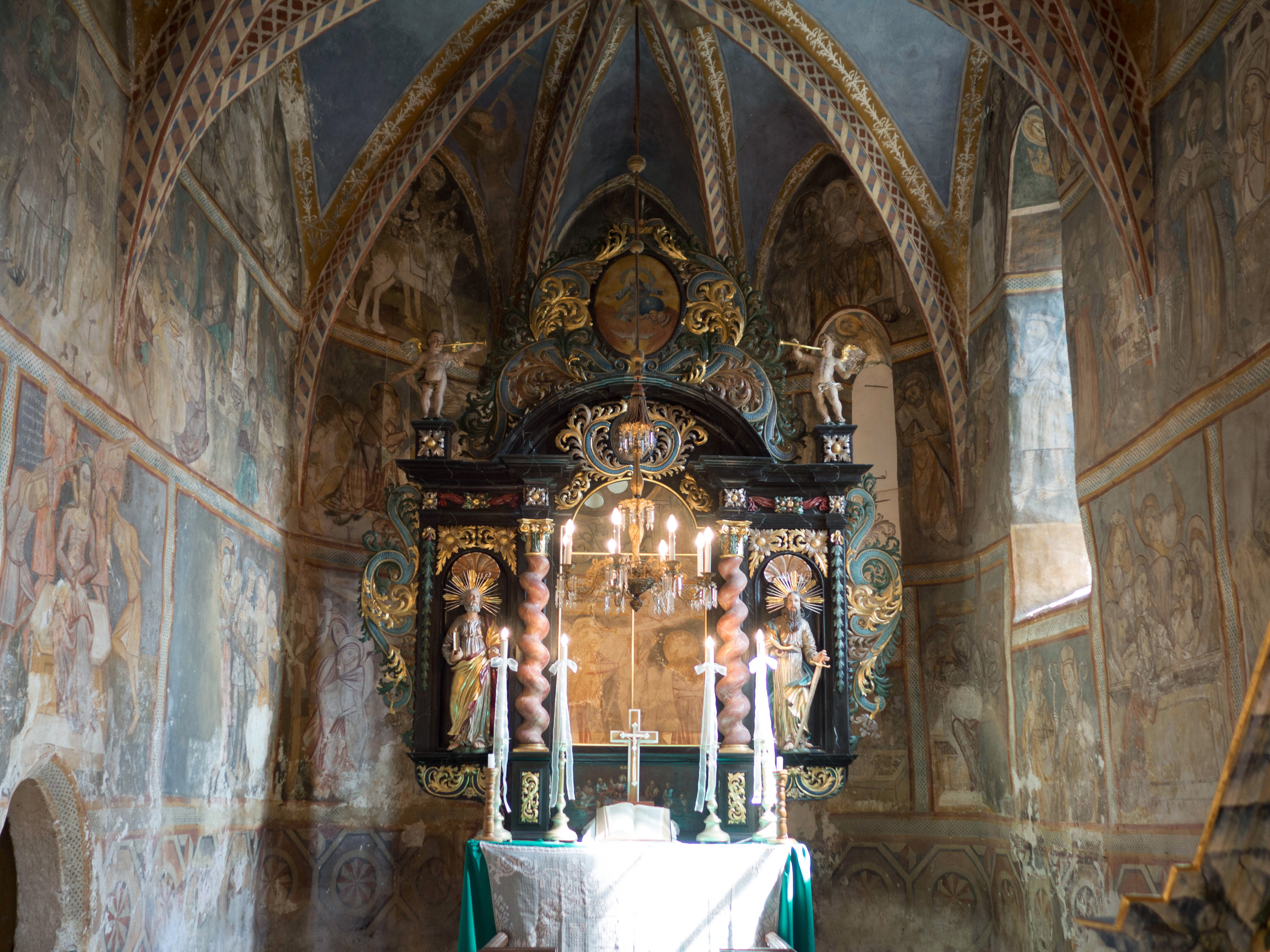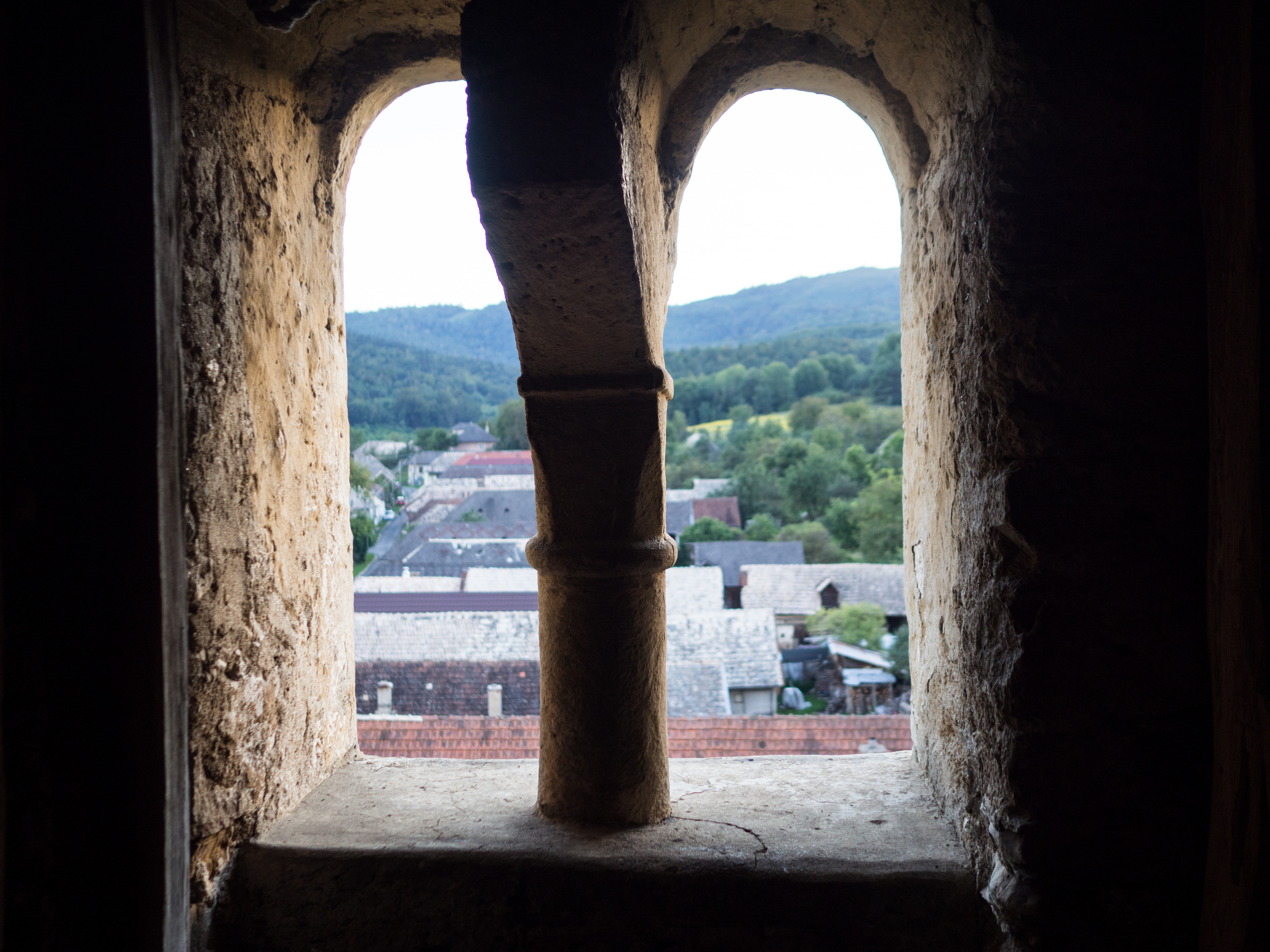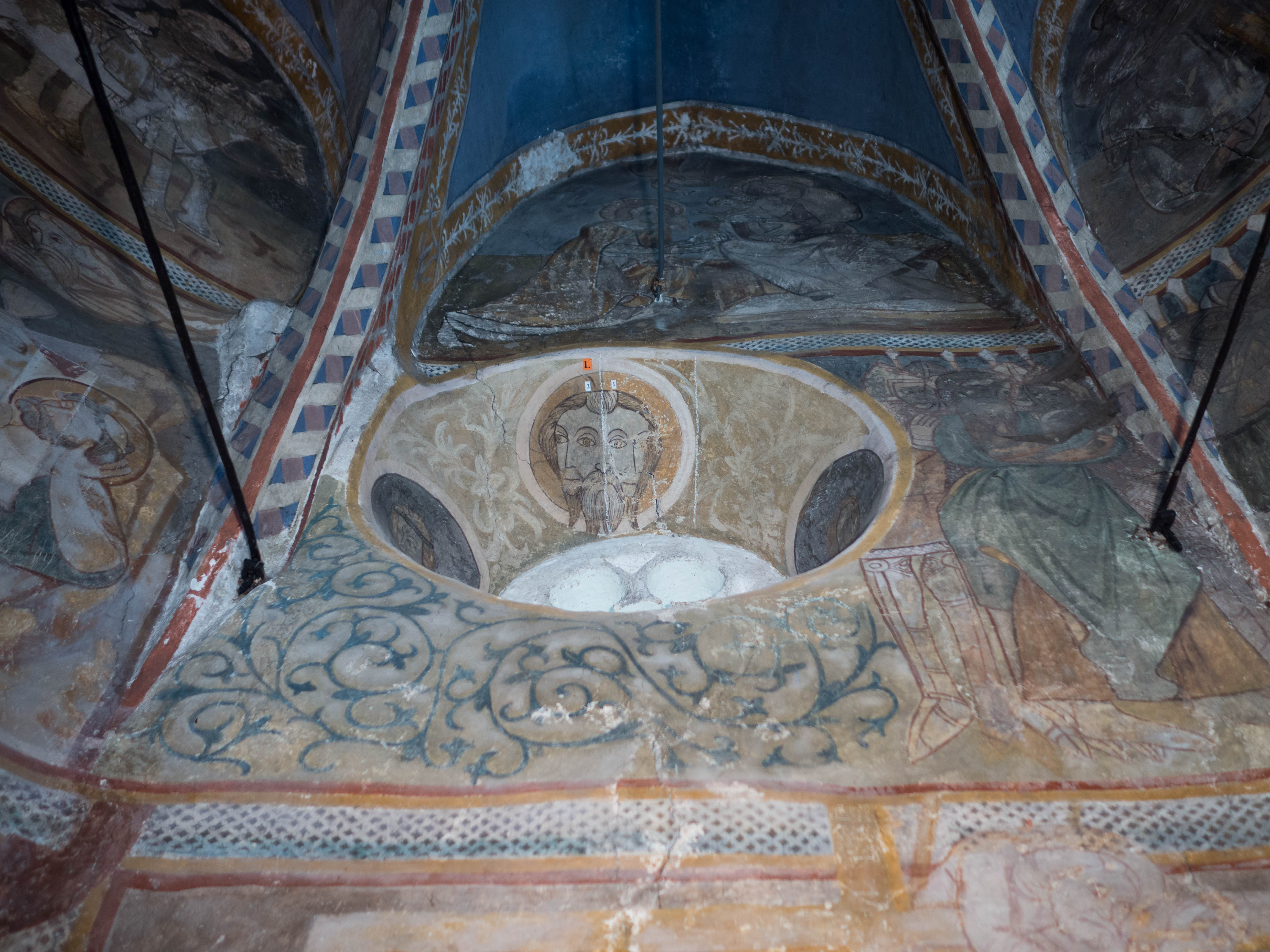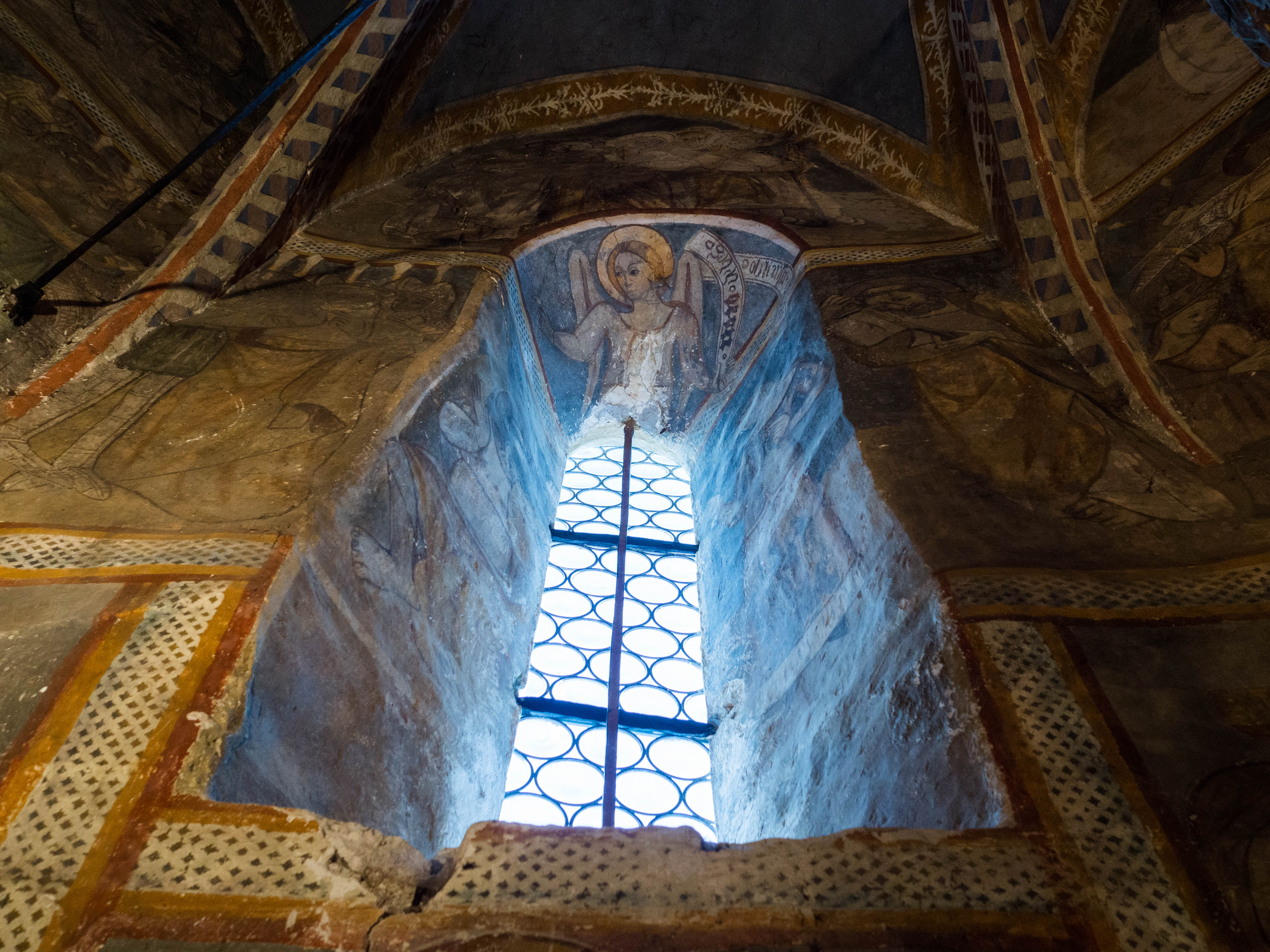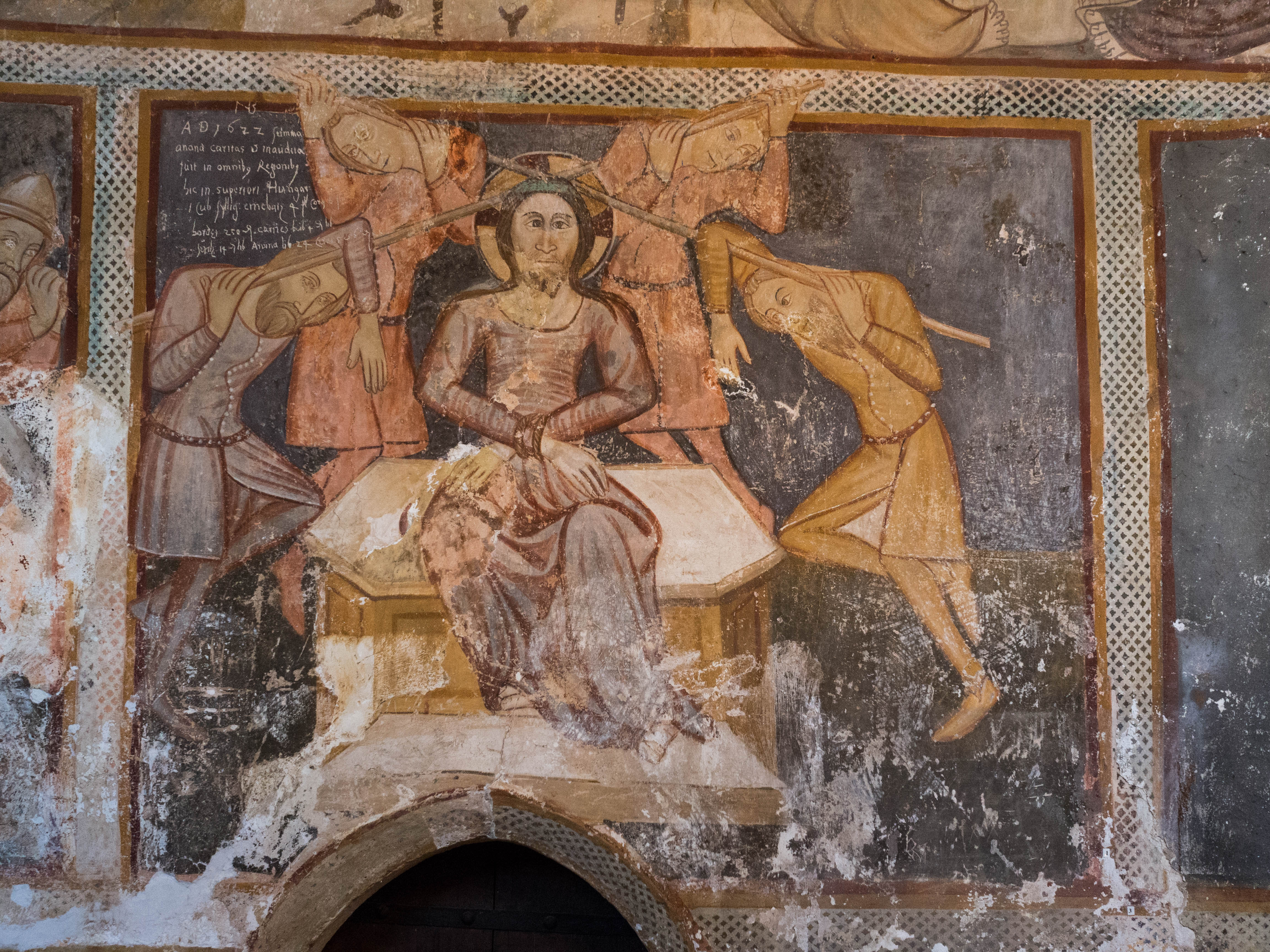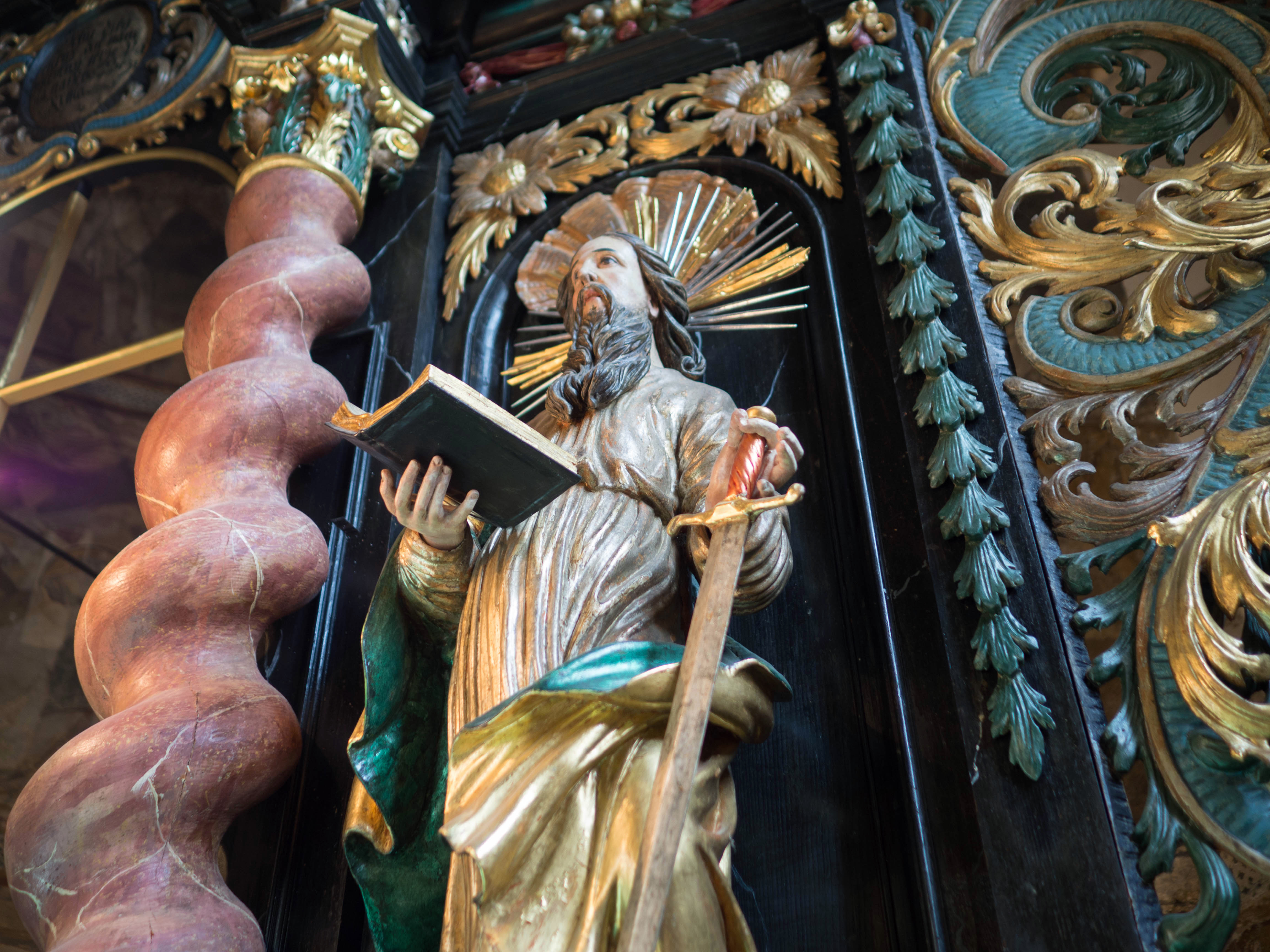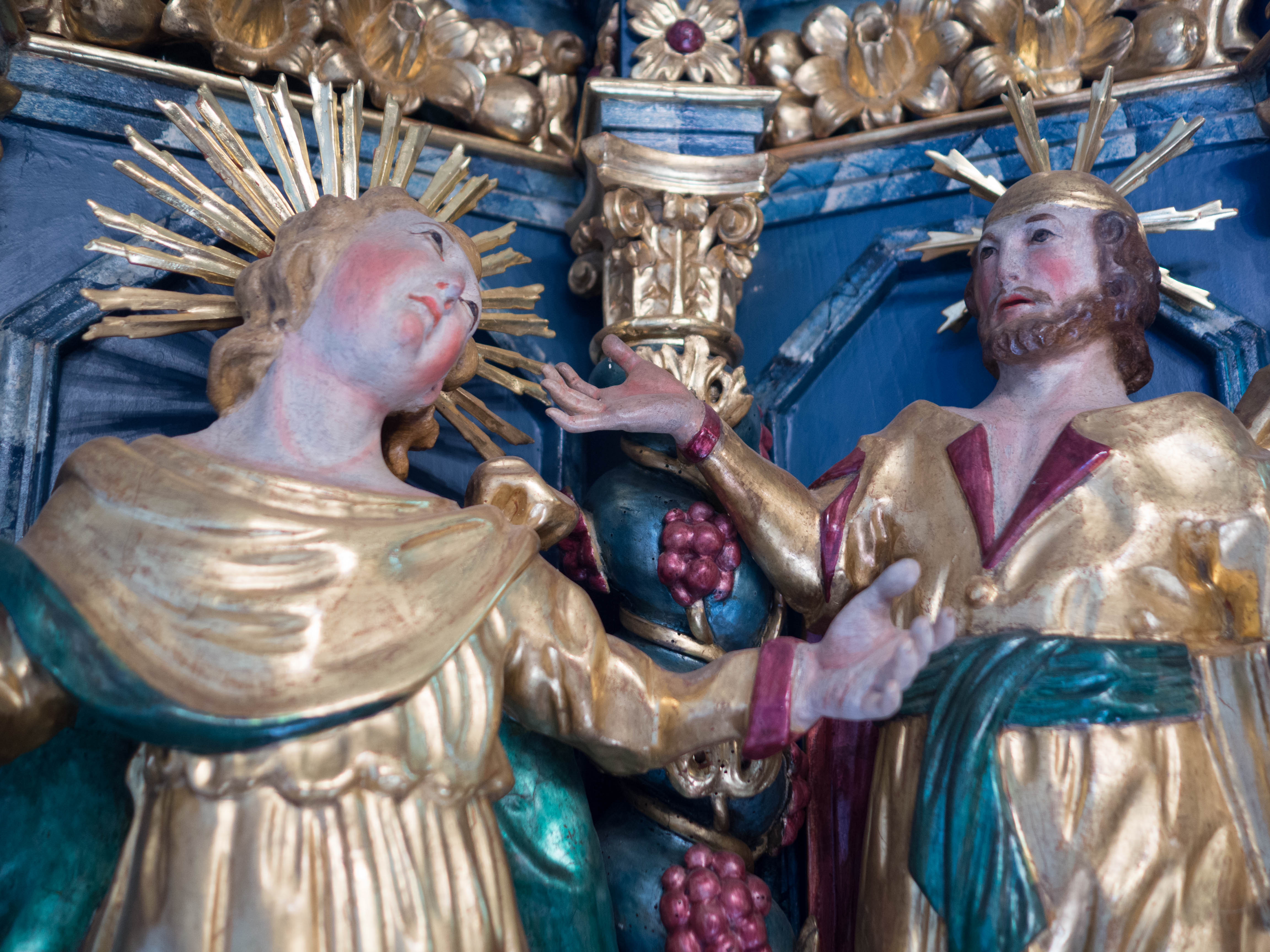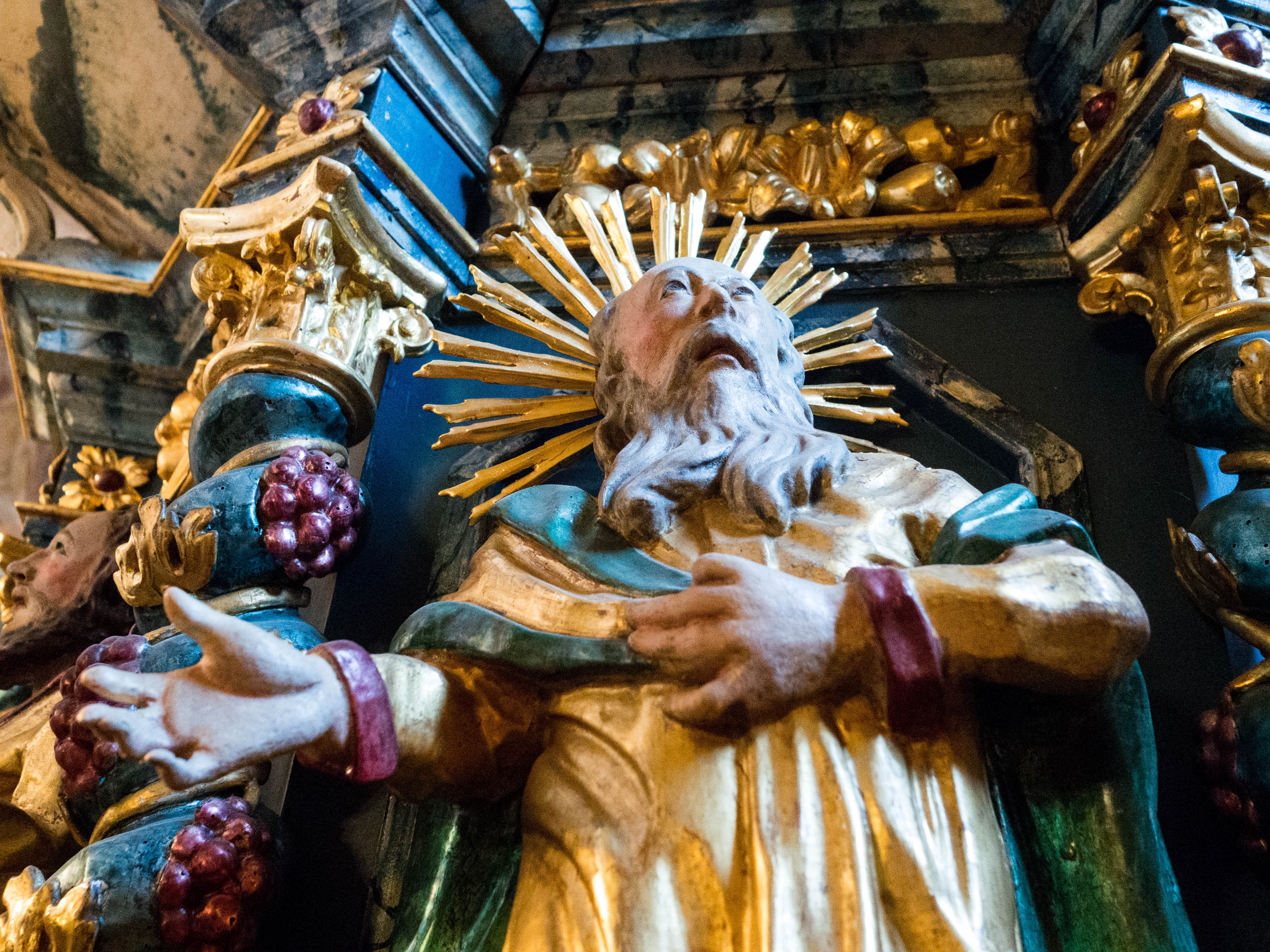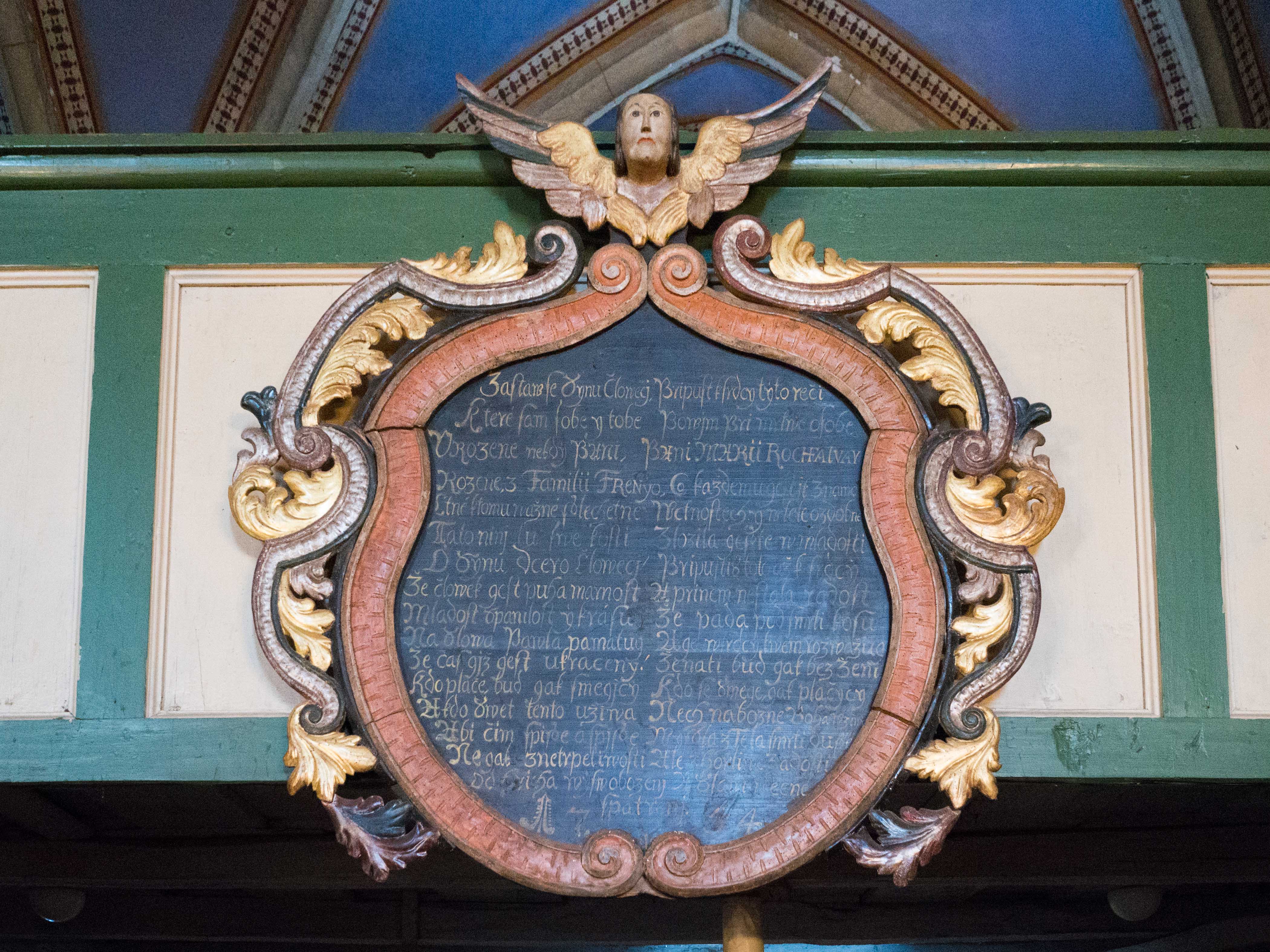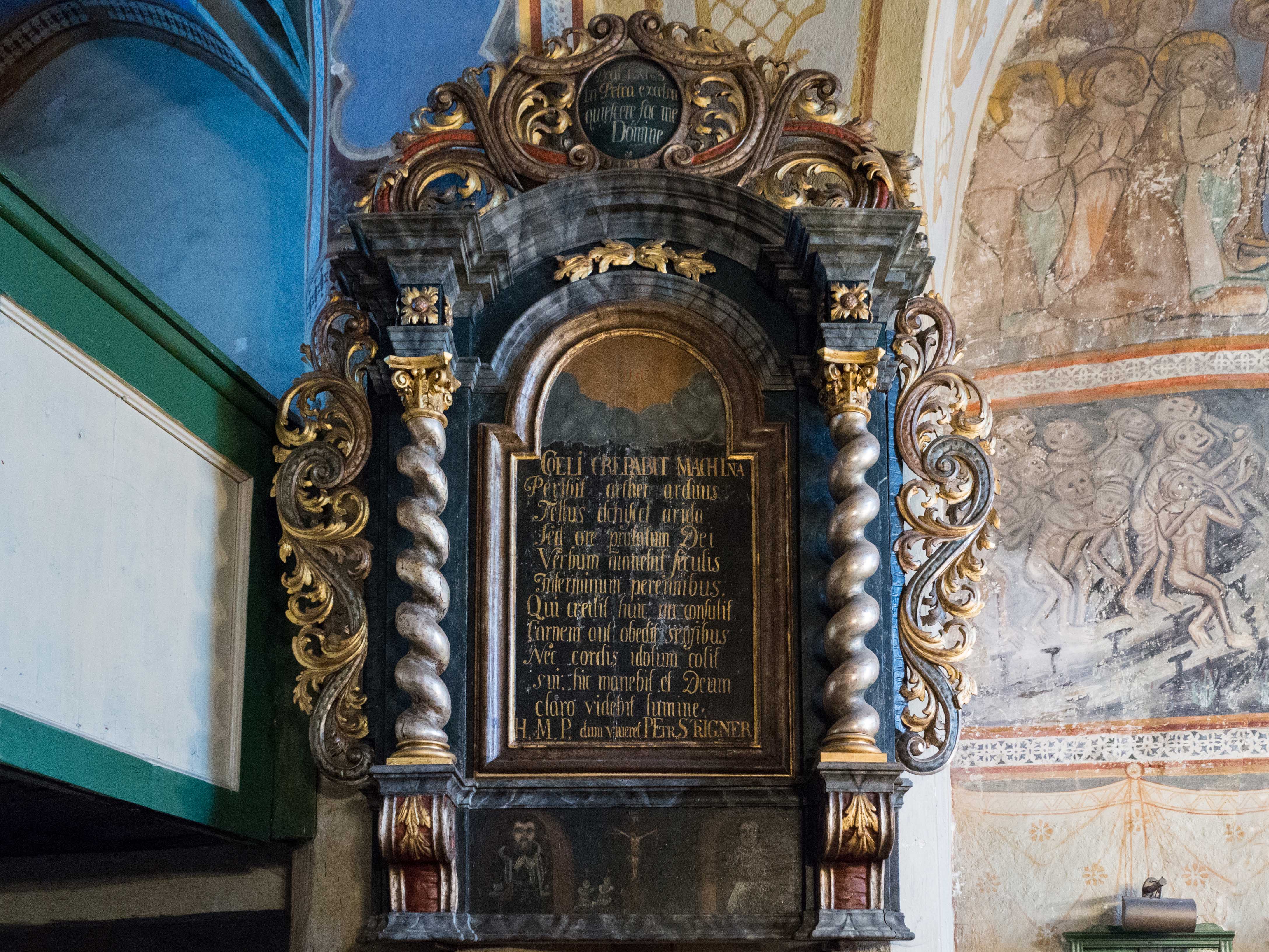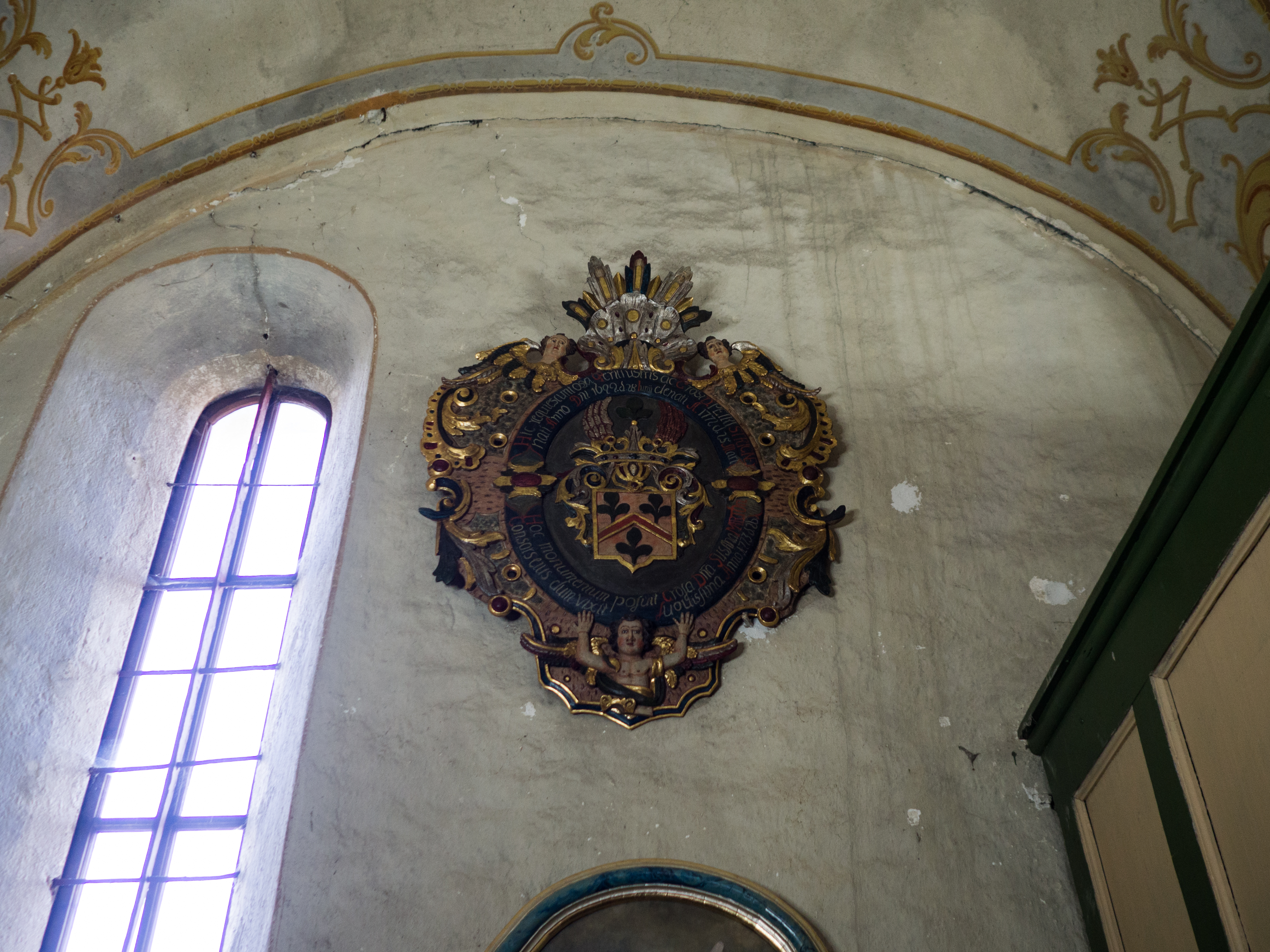The church in Ochtiná was formerly dedicated to St. Nicholas and is one of the oldest and most interesting landmarks of the Gemer countryside. The name of the village is most likely derived from the old German expression for the number eight: ocht, as an evidence of the area settled by German guests in the second half of the 13th century. According to historical sources, original eight German families established here a prosperous settlement founded on mining of iron ore located in the nearby Hrádok hill.
However, the layout of the church point to an older settlement which could have been destroyed during a Mongol invasion. This is indicated by a document from the king Belo IV, from 1243, by which he donates a large part of an area of the Slaná river valley for faithful services to Detrik and Filip Bubek. In 1318, Ochtiná was mentioned as a property of the Štítnik branch of the Bubek family, that certainly supported the construction of the local church and later its murals as well.
The Gothic church, built possibly on the site of a ruined Romanesque structure is a single-nave church with a polygonal-shaped chancel including a northern sacristy. Around the mid-14th century, the interiors were painted with figural wall paintings which were done by fresco technique. Research has shown that the tower had been built later, probably in second half of 15th century. Romanesque windows on the tower are secondarily used from other church in the area. At the beginning of the 16th century, the relatively small space of the church was extended with a northern side nave having a star-shaped vault.
In the first third of the 17th century, when the church was already Lutheran, medieval frescos were hidden under a white lime paint and, during the 18th century, the church was given a new Prussian vault over the nave. The Gothic wall paintings cover the entire inner shell of the chancel and are preserved in fragments in the attic space. The frescos were not preserved on the main nave’s northern wall which is opened by two wide arcades to the later added side nave. The southern side of the nave contains only a few fragments of the younger Renaissance ornamentation and there is an assumption of an older continuous layer of paintings underneath. Paintings in the chancel depicting the Christological cycle are divided into three bands above each other. One of the most impressive frescos is The Last Supper which is fascinating not only due to its colorfulness, but also because it expresses a certain intimacy of the story, escalating in the following scene of Prayer in the Gethsemane Garden.
In the rosette window arch of the chancel‘s far end, there is an archaic depiction of the Holy Trinity – Vultus trifons – a circular medallion in the shape of one head with three faces (in Slovakia, a similar representation can be seen only in two other places, in Žehra in the Spiš region and in Rákoš, in the Gemer region). This depiction was used until the Council of Trent (1545 – 1563). Considering it as an ancient medieval symbol, we have chosen the medallion not only as the logo of the church itself, but also as the main logo of our association The Gothic Route.
The author of the Ochtiná paintings can be identified with the author of the Koceľovce chancel. However, in Ochtiná, he refrained from strict linearity or distinctive contours and he applied modelling of shapes by tone painting in the individual representation of figures. The anonymous creator is called the Master of the Ochtiná Chancel. With his highly professional artistic expression, narrative and monumentality, this master’s paintings belong to the most profound genre of the Gemer wall paintings.
The Gothic Route civic association systematically helps with the restoration of the Ochtiná church. Recently, the wooden shingle roof of the church nave and the rose window were renovated.
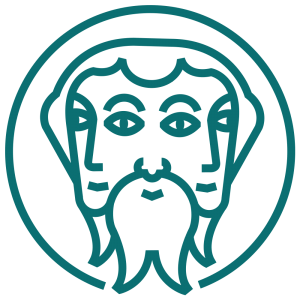 |
|
| Architecture: gothic | Construction: late 13th/early 14th century |
| Church: Lutheran Church | Patrocinium: originally St. Nicholas |
| Circuit: Štítnik Circuit | |
| Contact person: Martin Dudáš, diacon | |
| Telephone number: +421 905 874 096 |


